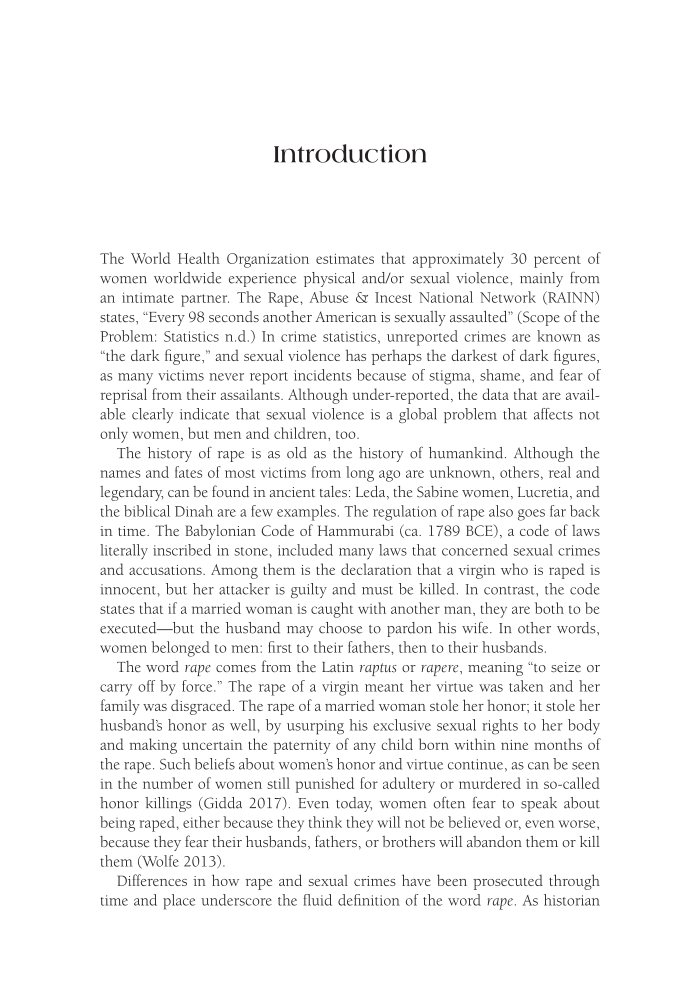Introduction The World Health Organization estimates that approximately 30 percent of women worldwide experience physical and/or sexual violence, mainly from an intimate partner. The Rape, Abuse & Incest National Network (RAINN) states, “Every 98 seconds another American is sexually assaulted” (Scope of the Problem: Statistics n.d.) In crime statistics, unreported crimes are known as “the dark figure,” and sexual violence has perhaps the darkest of dark figures, as many victims never report incidents because of stigma, shame, and fear of reprisal from their assailants. Although under-reported, the data that are avail- able clearly indicate that sexual violence is a global problem that affects not only women, but men and children, too. The history of rape is as old as the history of humankind. Although the names and fates of most victims from long ago are unknown, others, real and legendary, can be found in ancient tales: Leda, the Sabine women, Lucretia, and the biblical Dinah are a few examples. The regulation of rape also goes far back in time. The Babylonian Code of Hammurabi (ca. 1789 BCE), a code of laws literally inscribed in stone, included many laws that concerned sexual crimes and accusations. Among them is the declaration that a virgin who is raped is innocent, but her attacker is guilty and must be killed. In contrast, the code states that if a married woman is caught with another man, they are both to be executed—but the husband may choose to pardon his wife. In other words, women belonged to men: first to their fathers, then to their husbands. The word rape comes from the Latin raptus or rapere, meaning “to seize or carry off by force.” The rape of a virgin meant her virtue was taken and her family was disgraced. The rape of a married woman stole her honor it stole her husband’s honor as well, by usurping his exclusive sexual rights to her body and making uncertain the paternity of any child born within nine months of the rape. Such beliefs about women’s honor and virtue continue, as can be seen in the number of women still punished for adultery or murdered in so-called honor killings (Gidda 2017). Even today, women often fear to speak about being raped, either because they think they will not be believed or, even worse, because they fear their husbands, fathers, or brothers will abandon them or kill them (Wolfe 2013). Differences in how rape and sexual crimes have been prosecuted through time and place underscore the fluid definition of the word rape. As historian
Document Details My Account Print multiple pages
Print
You have printed 0 times in the last 24 hours.
Your print count will reset on at .
You may print 0 more time(s) before then.
You may print a maximum of 0 pages at a time.


























































































































































































































































































































































































































































































































































































































































































































